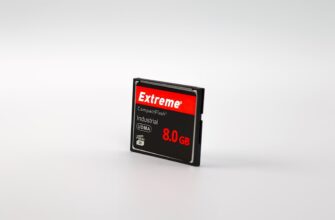🚀 USDT Mixer — Ultimate Privacy, Zero Hassle
Take full control of your USDT TRC20 transfers with our secure mixing service. 🧠
No registration. No personal data. Just clean, private transactions 24/7. 🌐
Transparent fees starting from only 0.5%.
- Why Private Key Security Can’t Be Ignored
- Core Principles for Private Key Safety
- Method 1: Hardware Wallets (Cold Storage)
- Method 2: Paper Wallets Done Right
- Method 3: Encrypted Digital Storage
- Method 4: Multi-Signature Solutions
- Critical Mistakes to Avoid
- Frequently Asked Questions (FAQ)
- Can I store private keys in my password manager?
- How often should I back up my private keys?
- Are metal backups better than paper?
- What if I lose all private key backups?
- Can I store keys on an encrypted smartphone?
Why Private Key Security Can’t Be Ignored
Your private key is the ultimate gatekeeper to your digital assets – whether cryptocurrency wallets, encrypted files, or SSH servers. Unlike passwords, private keys can’t be reset if lost or stolen. A single breach could mean irreversible loss of funds or data. This tutorial delivers actionable methods to fortify your private key security against hackers, accidents, and human error.
Core Principles for Private Key Safety
Before diving into storage methods, adopt these non-negotiable rules:
- Never store digitally in plain text – Unencrypted keys on devices are hacker magnets
- Maintain physical isolation – Disconnect storage mediums from internet-connected devices when not in use
- Implement redundancy – Use multiple secure backups to prevent single-point failures
- Test recovery – Verify backups actually work before you need them
Method 1: Hardware Wallets (Cold Storage)
Hardware wallets like Ledger or Trezor provide military-grade security by keeping keys offline in dedicated devices. Follow this process:
- Purchase directly from the manufacturer to avoid tampered devices
- Initialize the device in a private space and record the recovery seed phrase
- Set a strong PIN (8+ digits with no patterns)
- Store the device and seed phrase in separate fireproof/waterproof locations
Best for: High-value cryptocurrency holdings requiring maximum security.
Method 2: Paper Wallets Done Right
When created securely, paper remains a viable offline solution:
- Generate keys on an air-gapped computer (never online)
- Use open-source tools like BitAddress or Diceware
- Print with a non-wireless printer, then wipe printer memory
- Laminate or use archival-quality paper to prevent degradation
- Store in multiple secure locations (e.g., bank vault + home safe)
Critical: Never photograph or scan paper wallets – digital copies create vulnerability.
Method 3: Encrypted Digital Storage
For keys needing occasional access, use layered encryption:
- USB Drives: Encrypt with VeraCrypt using AES-256 + hidden volume
- Password Managers: KeePassXC (open-source) with 25+ character master password
- Air-Gapped Devices: Dedicated offline computer for key management
Security Protocol: Always decrypt keys in a clean OS environment without network access.
Method 4: Multi-Signature Solutions
Distribute key control across multiple parties/devices:
- Set up 2-of-3 multisig wallets (e.g., Electrum, Casa)
- Store keys geographically: Home safe, bank deposit box, trusted relative
- Require multiple approvals for transactions
This neutralizes single-point failures while maintaining accessibility.
Critical Mistakes to Avoid
- ❌ Cloud storage without end-to-end encryption (Dropbox, Google Drive)
- ❌ SMS/email backups (easily intercepted)
- ❌ Storing keys on exchange-hosted wallets
- ❌ Digital photos of keys (cloud sync vulnerabilities)
- ❌ Sharing keys via messaging apps
Frequently Asked Questions (FAQ)
Can I store private keys in my password manager?
Yes, but only with extreme precautions: Use offline/open-source managers like KeePassXC with a 25+ character master password and 2FA. Never store the database in cloud-synced folders.
How often should I back up my private keys?
Immediately after creation, then annually unless access patterns change. Always test backups quarterly using small transactions (for crypto) or decryption attempts.
Are metal backups better than paper?
Yes – fire/water-resistant steel plates (e.g., Cryptosteel) survive disasters paper can’t. Use acid-etching or punch systems for durability. Ideal for seed phrases.
What if I lose all private key backups?
Recovery is impossible by design. This emphasizes why redundant, geographically separated backups are mandatory. Consider multisig setups for critical assets.
Can I store keys on an encrypted smartphone?
Not recommended. Phones regularly connect to compromised networks and have higher malware risk. Use only for temporary operational keys with minimal funds.
🚀 USDT Mixer — Ultimate Privacy, Zero Hassle
Take full control of your USDT TRC20 transfers with our secure mixing service. 🧠
No registration. No personal data. Just clean, private transactions 24/7. 🌐
Transparent fees starting from only 0.5%.








